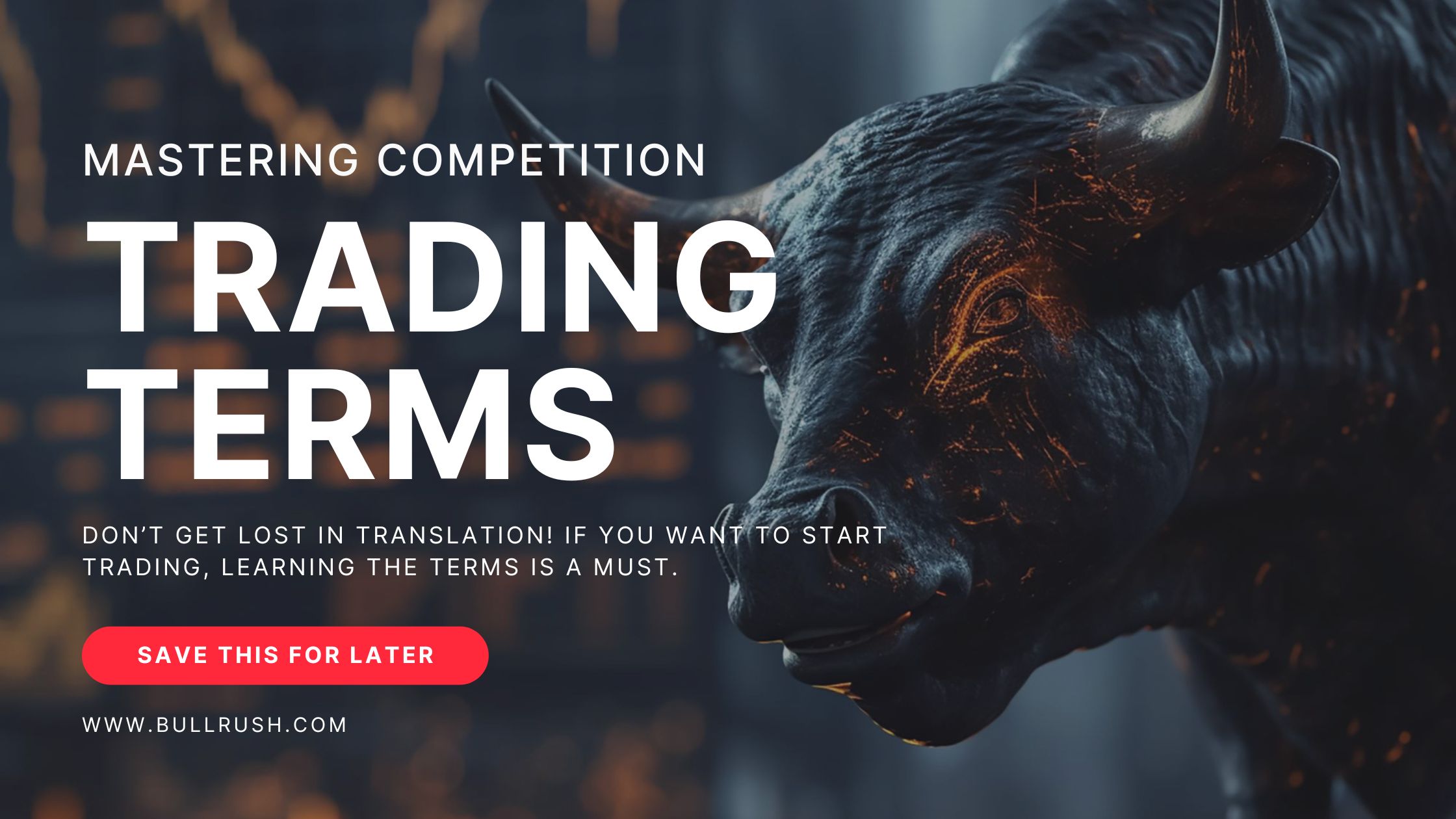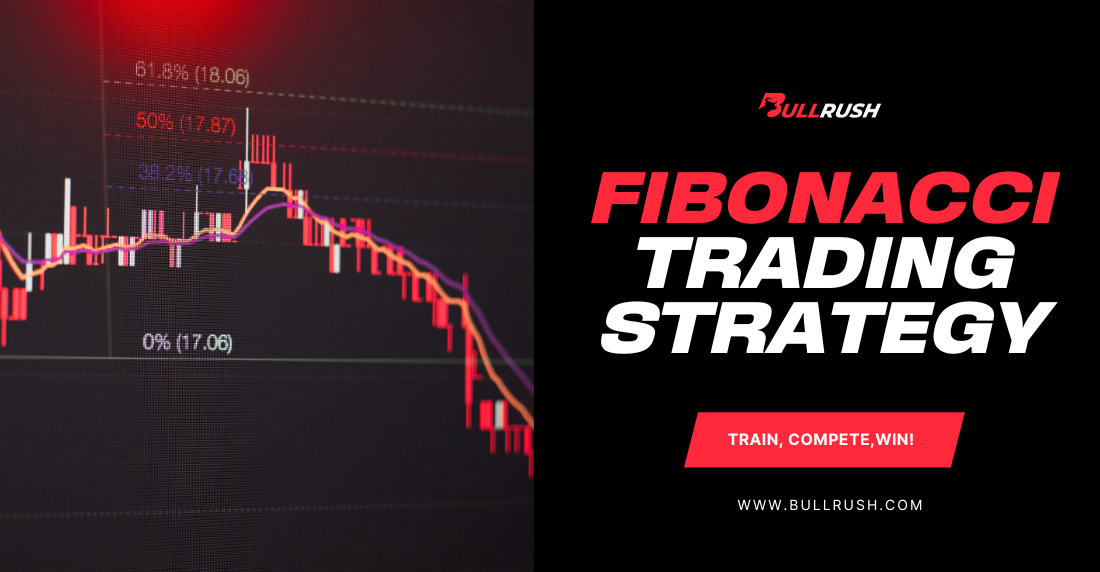
Mastering Trading Terms for Competitions
Buying and selling are the most basic trading terms you’ll come across. Buying refers to the act of purchasing a financial instrument, such as stocks or currencies, with the expectation that its value will increase. Selling, on the other hand, involves selling a financial instrument with the expectation that its value will decrease.
Inside The Article
Most Basic Trading Terms
Another important terms are ‘bid’ and ‘ask’. The bid is the highest price a buyer is willing to pay for a security, while the ask is the lowest price a seller is willing to accept. The difference between the bid and ask prices is known as the spread.
Other common trading terms include ‘long’ and ‘short’, which refer to the direction of a trade.
Going long means buying a security with the expectation that its price will rise, while going short means selling a security with the expectation that its price will fall.
Exploring Advanced Trading Concepts
Once you have a solid grasp of the basic trading terminology, it’s time to explore more advanced concepts.
Technical analysis involves studying historical price and volume data to forecast future price movements. Traders use various tools and techniques, such as chart patterns and indicators, to identify trends and make informed trading decisions.
Fundamental analysis, on the other hand, focuses on evaluating the intrinsic value of a security by analyzing factors such as financial statements, industry trends, and economic conditions. By understanding the underlying fundamentals of a security, traders can assess its potential for long-term growth or decline.
Market indicators, such as the Relative Strength Index (RSI) and Moving Average Convergence Divergence (MACD), provide valuable insights into market trends and momentum. Traders use these indicators to identify potential entry and exit points for their trades.
Terms You Need To Know For Trading Competitions
When you join a trading competition there are a few terms you’ll need to master. Here is a shortlist of the most common terms we use inside BullRush:
Starting Balance:
Amount ‘given’ to trade and start your portfolio.
For example USD 100K
Leverage:
Multiplier to determine your ‘buying power’. As an example, if you have $100K as a starting balance, and leverage of 100, you can hold assets of 100Kx100.
Min Trading Days:
Amount of days you need to make a trade in the system. Inside BullRush you will meet ‘trade’ criteria when you BUY an asset.
Daily Loss Limit:
Maximum percentage you can lose in 1 single day.
If the competition has a 8% DLL, and your portfolio loses 10% value in one single day, you are automatically disqualified from the competition.
Loss Limit:
Similar to Daily Loss Limit but triggered at any point of the competition.
Inactive Period:
The maximum timeframe you can go without making a trade in the system before getting kicked out of the competition.
Profit and Loss (PnL):
PnL is the way traders refer to the daily change to the value of their trading positions. The general formula for PnL is PnL = Value today minus value yesterday or the total PnL of your competition portfolio.
Usually to win a competition you’ll have the highest PnL during the trading period.
Soft and Hard Breaches:
A soft breach means that all trades that violated the rule will be closed. However, you can continue trading your Assessment or Funded account. A hard breach means that you violated either the Daily Loss Limit or the Max Trailing Drawdown rule.
How To Use Trading Terms IRL
Unless you are going for a World Record, memorizing all those trading terms is not going to help you much in real-life trading.
The best way to learn and apply those concepts is joining trading competitions. There are lots of great options in the prop space but if you are really starting out, BullRush’s free competitions are a great way to put those terms to good use.
Join BullRush News
The Most Searched Terms (by Category) in 2024
Forex Trading – Trading currencies in pairs.
Options Trading – Trading contracts that give the right to buy or sell at a specific price.
Futures Trading – Contractual trading of commodities or financial instruments at a future date.
Technical Analysis – Analyzing price movements through charts and patterns.
Fundamental Analysis – Evaluating securities by analyzing financial statements and economic factors.
Day Trading – Buying and selling securities within the same trading day.
Swing Trading – Holding positions for several days to capitalize on expected directional moves.
Position Trading – Holding a position for a long-term period based on fundamental trends.
Algorithmic Trading – Using algorithms to make trade decisions.
FOREX TRADING TERMS
Pip (Point in Percentage): The smallest price move in a currency pair.
Leverage: Using borrowed capital to increase the potential return of an investment.
Margin: The initial deposit required to open a position in the forex market.
Spread: The difference between the bid (sell) and ask (buy) prices.
Lot Size: A standardized quantity of the currency being traded.
Bid Price: The price at which the market (or your broker) will buy a specific currency pair from you.
Ask Price: The price at which the market (or your broker) will sell a specific currency pair to you.
Forex Signal: A suggestion for entering a trade on a currency pair, usually at a specific time and price.
Liquidity: The ability of a currency pair to be bought or sold without causing significant price movement.
Volatility: The degree of variation of a trading price series over time.
Order: An instruction to buy or sell on a trading venue such as a stock market, bond market, commodity market, etc.
Bear Market: A market in which prices are falling, encouraging selling.
Bull Market: A market in which prices are rising, encouraging buying.
Scalping: A trading strategy that involves making fast, small profits over short periods.
Swing Trading: A strategy that attempts to capture gains in a stock within one to four days.
Carry Trade: A strategy in which an investor borrows money at a low-interest rate to invest in an asset that provides a higher rate of return.
Hedge: An investment to reduce the risk of adverse price movements in an asset.
ECN Broker: A forex financial expert who uses electronic communications networks to give clients direct access to other participants in currency markets.
Stop-Loss Order: An order placed with a broker to buy or sell once the stock reaches a certain price.
Fundamental Analysis: Evaluating a currency by analyzing economic, social, and political forces that may affect its value.
Exchange Rate: The value of one currency expressed in terms of another.
Base Currency: The first currency listed in a forex pair.
Quote Currency: The second currency listed in a forex pair.
Cross Pair: A currency pair that does not include the US dollar.
Major Pairs: The most traded currency pairs, which include the US dollar.
Minor Pairs: Less frequently traded pairs that do not include the US dollar.
Exotic Pairs: Currency pairs that include one major currency and one from a small or emerging economy.
Margin Call: A demand by a broker that an investor deposits further cash to cover potential losses.
Overnight Position: A trade that remains open until the next trading day.
Long Position: Buying a currency pair, anticipating it will increase in value.
Short Position: Selling a currency pair, anticipating it will decrease in value.
Order Book: A list of buy and sell orders for a specific currency pair.
Slippage: The difference between the expected price of a trade and the price at which it is executed.
Drawdown: The decline from a historical peak in the total equity of a portfolio.
Equity: The balance of one’s positions when all positions are closed.
Free Margin: Funds available to open new positions or sustain trading losses.
Balance: The total amount of money in a trading account.
Broker: A person or company that buys and sells orders according to the trader’s decisions.
Technical Indicator: Tools used to predict future market movements based on historical prices.
Resistance Level: A price level where selling is thought to be strong enough to prevent the price from rising further.
Each of these terms plays a crucial role in Forex trading strategies and understanding market movements.
And if you are ready to trade for prizes, join BullRush today!
Comments
-
-
BullRush
You are welcome! BullRush Trading Competitions aim to help traders around the world.
-





Bothok Laron
I appreciate you sharing this blog post. Thanks Again. Cool.